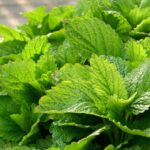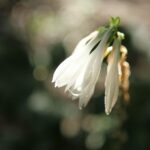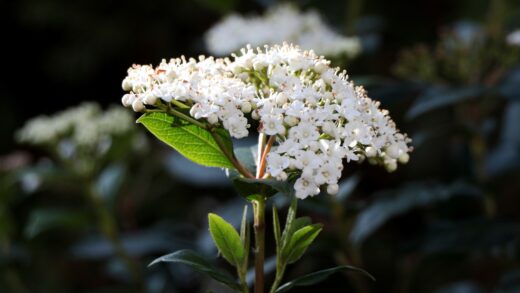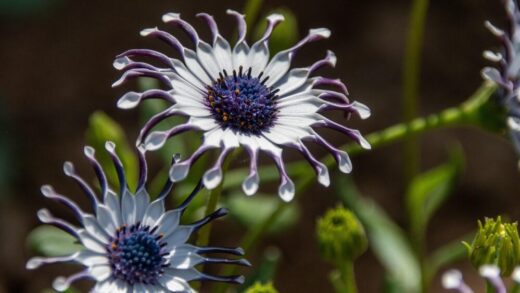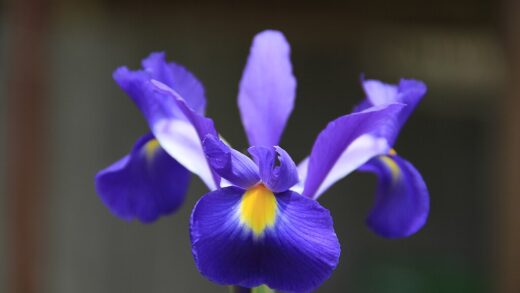The Manchu rose, scientifically known as Rosa xanthina, is an ornamental plant of unique beauty and remarkable resilience, and understanding its water management is key to achieving abundant flowering and healthy development. This species originates from the dry, sunny slopes of Northern China and Korea, which fundamentally defines its irrigation needs and its relationship with water. To ensure it displays its most beautiful form in our gardens, it is essential not to care for it based on the analogy of modern, water-intensive hybrid tea roses, but to consider its unique, drought-tolerant nature. With this knowledge, we can avoid the most common care mistakes and enrich our garden with a truly rewarding, low-maintenance, yet spectacular shrub.
The secret to the success of the Manchu rose lies in its deep and extensive root system, which the plant develops specifically to be able to absorb the necessary moisture even from the deeper layers of the soil. This characteristic makes it extremely resistant to long periods of drought, which is a common phenomenon in its natural habitat. Unlike modern rose varieties, which often grow shallower root systems and require constant moisture, the Manchu rose is specialized for survival and self-sufficiency. Therefore, the main goal of our irrigation should be to support the development and maintenance of this deep root system.
The plant’s physiological structure also serves efficient water management. Its leaves are often smaller in size or have a waxy coating, which reduces the rate of evaporation (transpiration), thus minimizing water loss on hot, windy days. Its woody stems are also efficient at transporting and storing water, contributing to the plant’s overall hardiness and low water demand. The combination of these adaptations makes the Manchu rose an excellent choice for gardens where water conservation or low-maintenance plants are preferred.
In summary, the irrigation strategy for the Manchu rose should be based on the principle of “less often, but more deeply.” Instead of pampering it with frequent, shallow watering that would lead to the development of a shallow root system, we must encourage the plant’s natural, deep-rooting tendency with rarer but thorough irrigation. This approach not only increases the plant’s health and resilience but also results in a much more self-sustaining shrub in the long run, one that is less sensitive to environmental stress and rewards us year after year with its brilliant, golden-yellow flowers.
Principles of irrigating newly planted specimens
The first year after planting is a critical period in the life of the Manchu rose, as this is when we establish the deep and strong root system that is the key to the plant’s future drought tolerance. The correct irrigation practice during this period not only ensures the survival of the plant but also actively stimulates the growth of roots towards deeper soil layers. Consistent and professional water supply in the first season is an investment that pays off generously in the following years in the form of a healthy and resilient plant. Therefore, special attention must be paid to the needs of the young shrub.
More articles on this topic
Immediately after planting, a generous, soaking irrigation is essential to help the soil settle around the roots and eliminate harmful air pockets. In the first few weeks, depending on the weather, repeated watering every few days may be necessary to prevent the top layer of the soil from drying out completely. However, the most important thing is not calendar-based watering, but regular checking of the soil moisture; by inserting our finger a few centimeters deep into the soil, we can ascertain the real needs, avoiding overwatering.
The technique of irrigation is at least as important as its frequency. The water should be applied slowly and thoroughly, directly at the base of the plant, avoiding unnecessary wetting of the foliage, which can lead to the development of fungal diseases. A drip system, a soaker hose, or a watering can with a rose attachment are ideal tools for this purpose, as they allow the water to penetrate deep, up to 30-40 centimeters. This deep watering attracts the roots downwards instead of them remaining at the surface.
As the plant begins to grow and produce new shoots, the frequency of watering should be gradually reduced, thereby encouraging the plant to become more independent. This “weaning” process forces the roots to actively seek water in deeper soil layers, thus becoming more resistant to surface drought. By the end of the first growing season, the young Manchu rose should be well on its way to developing into a stable, drought-tolerant shrub that will require significantly less intervention in the following years.
Irrigation strategy for established shrubs
When the Manchu rose reaches maturity, which usually occurs after two to three years, its irrigation needs change radically, and the plant becomes an extremely drought-tolerant shrub. At this stage, overwatering poses a much greater risk to its health than temporary water shortage, so the irrigation strategy must be switched from a regular schedule to a needs-based approach. A well-established, mature shrub is able to manage its available water efficiently and can often go for weeks without rainfall or artificial irrigation. The gardener’s task here is more about observation than active intervention.
More articles on this topic
To determine “needs-based” irrigation, we must learn to interpret the signals of the plant and the soil. Slight wilting during the hottest part of the day that recovers on its own by evening is a natural stress response and not necessarily a sign of thirst. The most reliable method is to check the soil moisture 10-15 centimeters below the surface; if the soil feels dry in this zone, then it is time for a thorough watering. This method ensures that we only provide water when the plant truly needs it.
For an established Manchu rose, “deep watering” means applying a significant amount of water, about 20-40 liters, at a single time but infrequently. In an average, temperate climate without extreme and prolonged droughts, such a thorough watering every 2-4 weeks may be sufficient during the hottest summer months. This large volume of water seeps deep into the soil, replenishes the moisture reserves of the root zone, and maintains the healthy, deep-penetrating root system that is the foundation of the plant’s stability.
Of course, water needs are not constant but change with the seasons and weather, so flexible adaptation is essential. In spring and autumn, natural rainfall often fully covers the plant’s water needs, so no artificial supplement is necessary. During times of extreme heat and drought, the time between waterings may need to be shortened somewhat, but the principle of deep, infrequent watering remains valid. In late autumn, as the plant prepares for its dormant period, watering should be gradually stopped to allow the shoots to mature and prepare for winter.
Special irrigation techniques and common mistakes
To ensure efficient water use and maintain plant health, it is worthwhile to use modern and proven irrigation techniques that are perfectly suited to the needs of the Manchu rose. Drip irrigation is the most effective solution as it delivers water slowly and directly to the root zone, minimizing evaporation loss and preventing the foliage from getting wet. Equally important is applying a thick, 5-10 centimeter layer of organic mulch (such as bark, compost, or wood chips) around the base of the plant, which helps to conserve soil moisture, suppress weeds, and regulate soil temperature.
One of the most important practices to avoid is overhead watering with a sprinkler. Although it may seem like a quick and easy solution, wetting the leaves creates an ideal environment for fungal diseases such as powdery mildew or rust, to which even resistant species can be susceptible under favorable conditions. Watering in the evening is particularly harmful, as the leaves remain wet all night, which multiplies the risk of infection. Watering should always be scheduled for the early morning hours so that the foliage can dry quickly.
The most common and most damaging mistake is frequent, shallow watering in small amounts. This bad practice promotes the development of a weak, shallow root system that is extremely vulnerable to drought and heat stress and requires constant supplementation. Such a plant loses its natural self-sufficiency and becomes dependent on the gardener’s constant intervention, which is exactly the opposite of the Manchu rose’s natural characteristics and the care goals associated with it. For long-term success, this mistake must be avoided at all costs.
The other serious mistake is overwatering, which can also cause major problems. Persistently wet, airless soil leads to a lack of oxygen for the roots, followed by rot, which often results in the death of the plant. Paradoxical signs of overwatering can include yellowing, wilting leaves, which an inexperienced gardener might misinterpret as a lack of water and worsen the situation with further watering. For the Manchu rose, the rule always applies: when in doubt, it is better to wait with watering, as this species tolerates short periods of drought much better than standing water.









